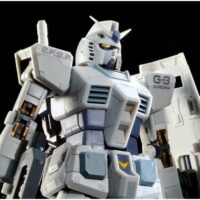Your basket is currently empty!
Mobile Suit Gundam MSV
Mobile Suit Gundam MSV (Mobile Suit Variations) is a design-and-lore project launched in the early 1980s to expand the Universal Century beyond what appeared on TV. Led largely by mechanical designer Kunio Okawara, MSV presented “what you didn’t see on screen”: factory options, field conversions, ace-pilot customs, and pre-production prototypes. Each design came with line art, markings, unit histories, and short in-universe notes, turning model kits and magazine spreads into a quasi-technical archive of the One Year War.
MSV’s big idea was plausibility. Instead of treating every machine as a one-off hero unit, it described development trees and local adaptations—why a desert force would favor dust-proof intakes, how test beds led to limited runs, why ace colors and personal emblems appeared. That approach produced enduring fan favorites: the RX-78-1 Prototype Gundam and FA-78-1 Full Armor Gundam; Zaku derivatives like the MS-06R High Mobility Type, MS-06K Zaku Cannon, and desert/tank variants; GM spin-offs such as the GM Sniper Custom and GM Cannon; and Zeon upgrades like the Gelgoog Cannon and Dom Tropical Test Type. Many of these “side” machines later influenced games, novels, and even on-screen works, seeding markings, equipment, and unit culture across the franchise.
The MSV template—clean line art, tech briefs, photo-novel features, and kits that match the fiction—became a permanent pillar of Gundam. It returned in later waves (often branded MSV-R, for “Return”) and similar projects (Harmony of Gundam, M-MSV, game-original variations), ensuring that every new series is accompanied by a wider ecosystem of believable variants. For builders, MSV is the sandbox where markings, weapons packs, and subtle part swaps tell stories; for the setting, it’s the reason the Universal Century feels like a real industrial landscape rather than a parade of one-of-a-kind prototypes.
Showing the single result
Bandai Spirits
RG PB RX-78-3 G-3 Gundam
£36.49

